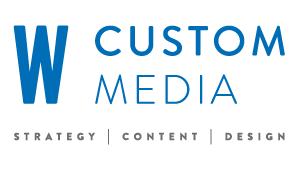
Attention-span of a goldfish? Not if your audience is entertained.
According to some scientists, human attention-spans are shrinking to that of a goldfish’s. Experts blame our digital world, creating a population of distracted, attention-deficit individuals who are conditioned by their smartphones to react when there are stimuli dancing across their screens.
There are two popular philosophies on how people look at a page. One is the “Z-pattern” in which the eyes scan across, then diagonally down, then across again. Another is the “F-pattern,” which has been a proposed reading pattern for more than a decade, using research that was conducted using text-heavy pages and through the use of heatmaps. This pattern illustrates how people linger on the top of a page, then down the left column, and across the middle. If nothing continues to attract their attention anywhere along this “F,” they’ll scroll past the post or click off the site.
Because of these two patterns, it’s essential to beckon your reader in with a variety of ways. It’s not enough to rely on a catchy headline or a gripping opening line. Here at WCM, we specialize in creating “multiple entry points” to a story—ways in which a reader can jump into a story at any point on a page and be engaged throughout the story.
1. Have good content, above all.
You can use as many bells and whistles as you like, but if there isn’t strong content serving at its foundation, then people will move on. Your main idea needs to be useful, informative, and interesting.
2. Make a statement with the headline.
Your headline is the invitation into a story. It should be bold, clear, short, to the point, and grip the reader’s attention right away. Next week, we’ll dive into digital headlines and how to optimize your headlines for SEO and so much more.
3. Explain it in the deck.
If you use a deck, it should be a clear description of the article. Together with the headline, it should describe the entire article if someone doesn’t read the rest.
4. Show, don’t tell.
A picture is worth a thousand words, and a powerful image will convey even more. An infographic can perform even better than a written statement in some cases, particularly if the information is dry.
5. Create descriptive captions.
A bold caption with a clear description should accompany all images, as this is another way for audiences to gain information about the article without having to read it first.
6. Emphasize important quotes.
A pull-quote can create a dramatic, designed effect on a page that draws people into reading the story.
7. Highlight a statistic.
Explained in text, statistics have a way of making eyes glaze over. Enlarge it, dress it in new colors, and spotlight it on a page, and eyes sparkle with interest. Spotlighting a stat will help to convey an important fact from your article that may have been missed otherwise.
It’s important to keep your readers interested in what you have to say. Emphasizing key information through images and graphics can engage your readers and sustain their attention. You’ll be able to communicate your message successfully as well, even with the shortest of attention-spans.
